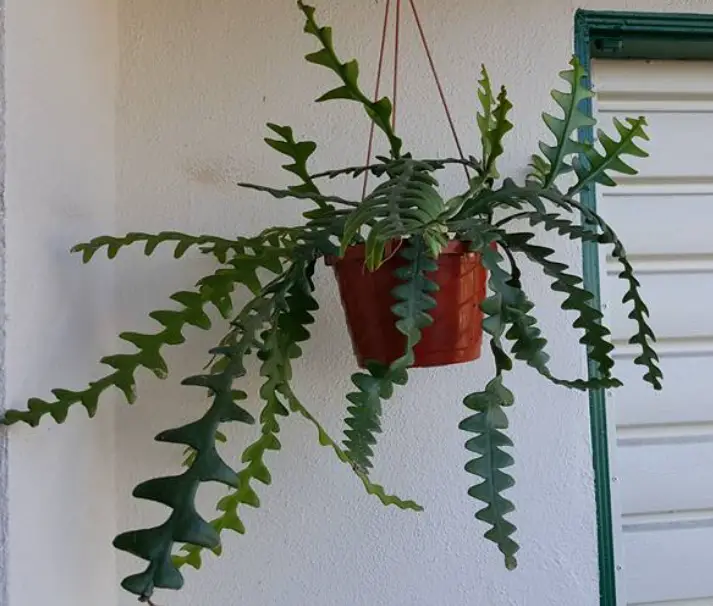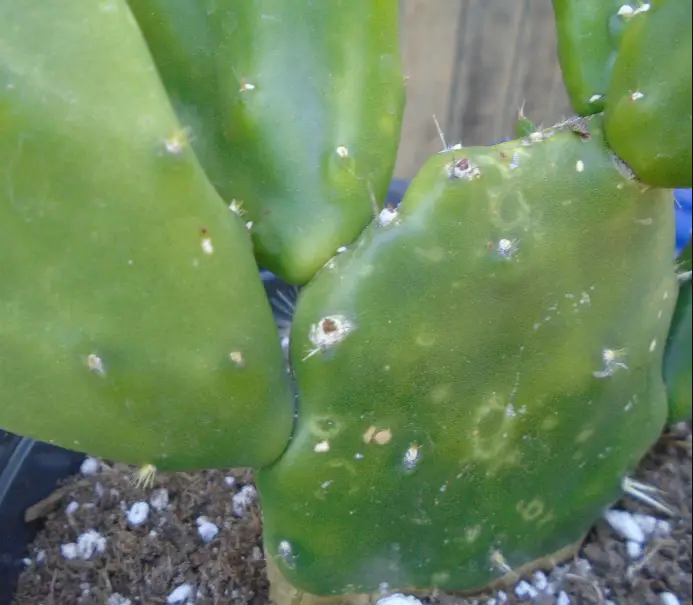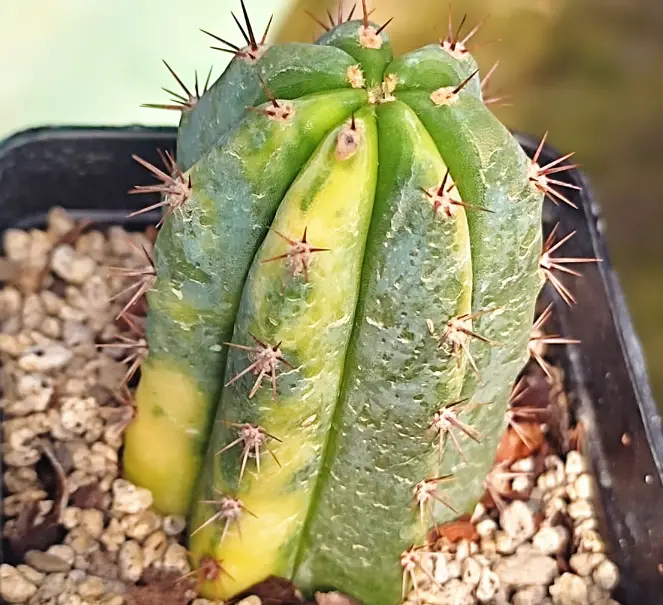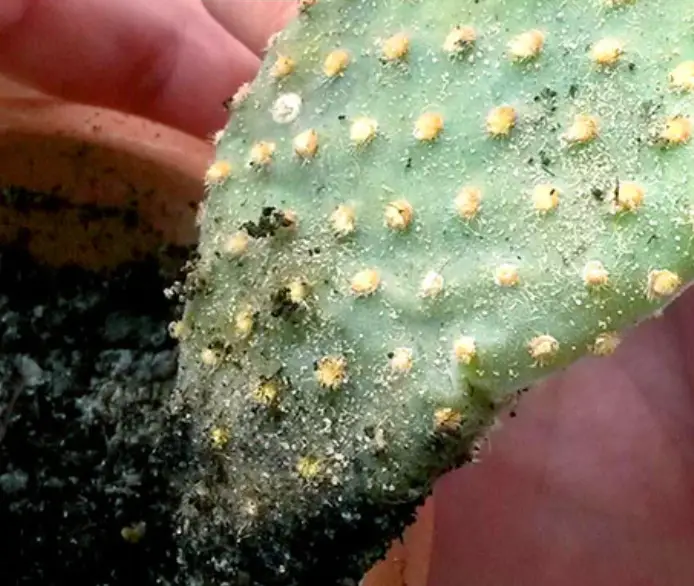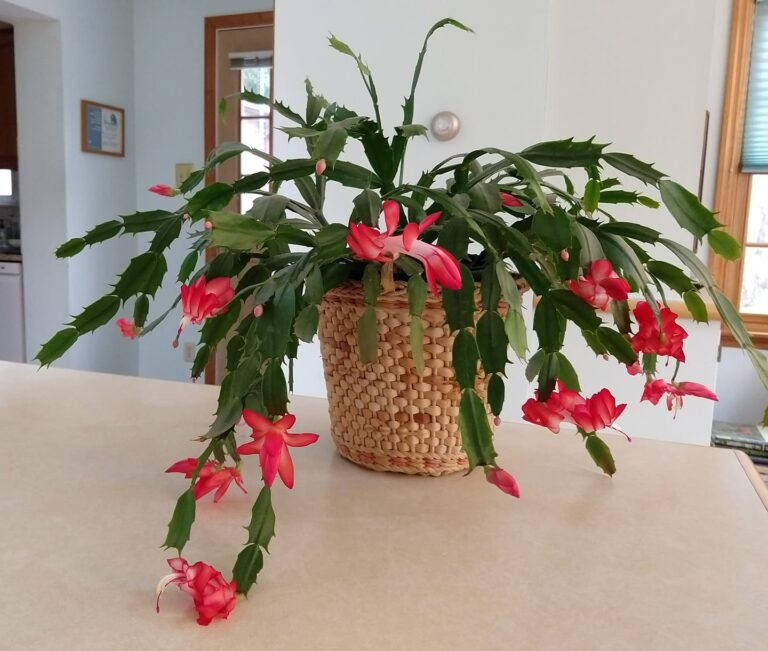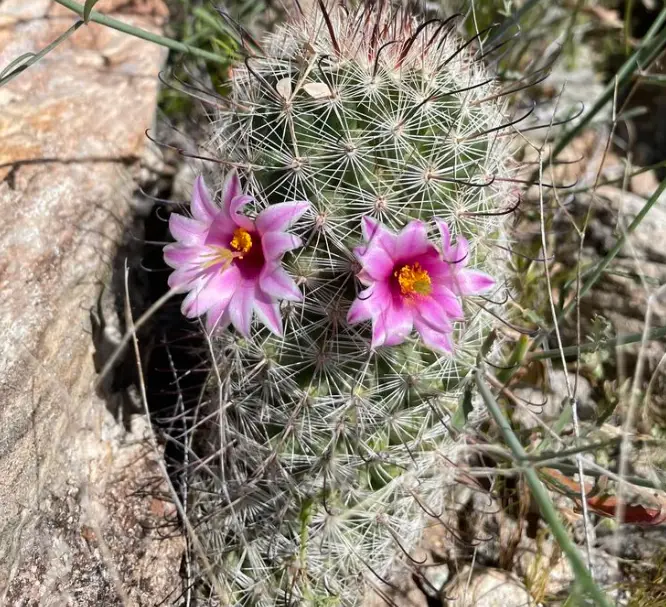5 Trailing Cactus (Best for Hanging Baskets)
Trailing cactus plants can add beauty and color to any space. They can be grown in hanging baskets on a patio, porch, or balcony. I enjoy it when they are suspended indoors on a ceiling beam or window frame. However, there are just a few hanging cacti you can choose for this arrangement.
Popular trailing cactus plants include the rattail cactus, monkey’s tail cactus, fishbone cactus, dragon fruit cactus, and peanut cactus. While they are all great for hanging baskets, you should understand the amount of light, water, and care requirements for each plant.
Hanging or trailing cactus plants
Here are trailing cactus plants that can hang gracefully on the sides of a hanging basket.
Rattail cactus
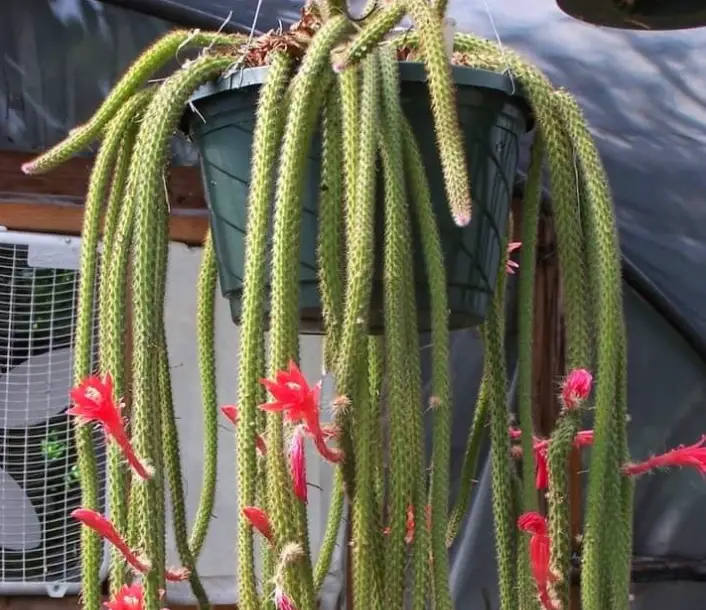
The rattail cactus (Aporocactus flagelliformis) is a popular houseplant commonly grown in hanging baskets or pots. It has long trailing stems that can grow up to 6 feet long. The stems branch profusely at the base and form attractive flowers. It is very easy to grow and care for a rattail cactus.
These cactus do well both indoors and outdoors. It prefers bright indirect light, fertile well-draining soil, and a minimum temperature of 6 °C (43 °F). However, it will need a larger pot and should be repotted after every 2 to 3 years. Water your rattail cactus only when the soil is completely dry.
Monkey’s tail cactus
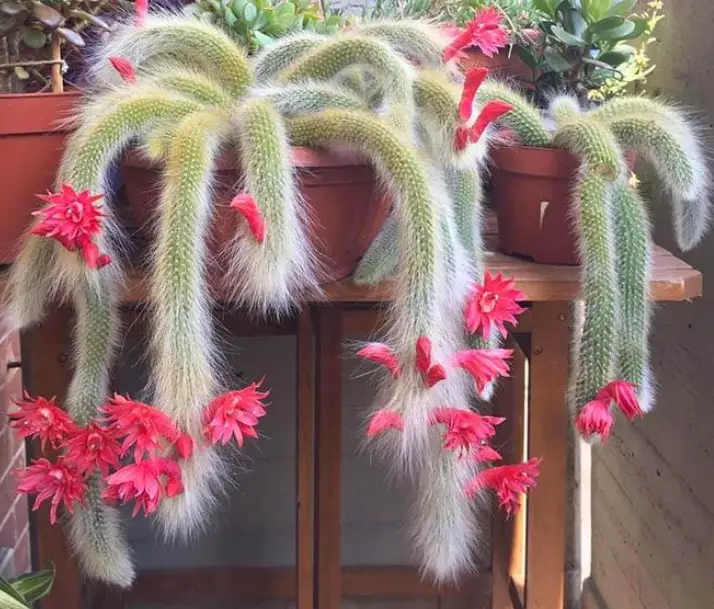
Monkey’s tail (Cleistocactus Colademononis) is a trailing cactus with ascending stems that can grow up to 3 feet long. It blooms every spring or summer with attractive tubular red or orange flowers. This cactus is suitable for hanging baskets and you can grow it indoors or outdoors.
Growing and caring for a monkey’s tail cactus isn’t difficult. It prefers well-draining soil, bright indirect light, and regular watering during the spring and summer seasons. However, monkey tail cactus is susceptible to root rot so allow the soil to dry out completely between waterings.
Monkey’s tail cactus is not cold hardy, you should protect it from frost in cold climates. It is also important to repot it every 2-3 years. Fertilize it monthly during the growing season with a well-balanced houseplant fertilizer to encourage more growth and blooming.
Fishbone cactus
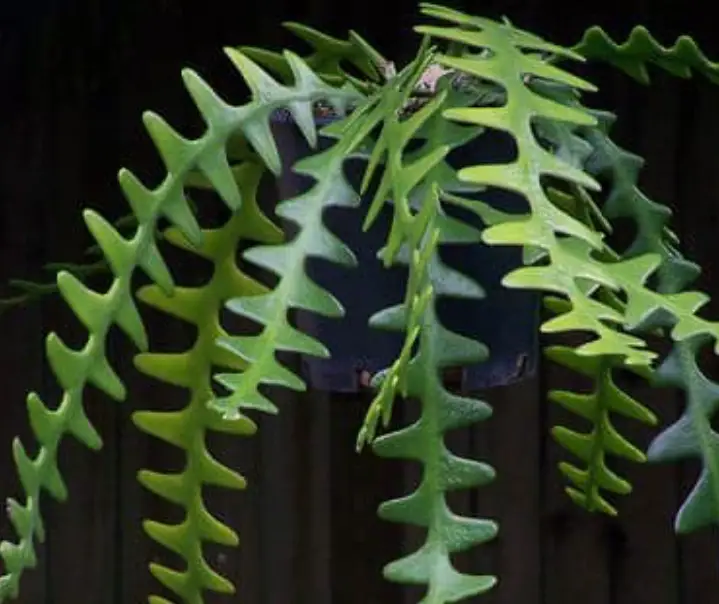
The fishbone cactus (Disocactus anguliger) is a trailing epiphytic cactus with long, flat, segmented stems that can grow up to 6 feet long. It is a beautiful ornamental plant best for hanging baskets. It blooms in late summer or fall with white or yellow flowers.
This cactus is a low-maintenance plant that prefers bright indirect light. When growing fishbone cactus, use well-draining soil rich in organic matter. Watering should be regular but should be done only when 2 inches of the soil feels dry. This plant is sensitive to water that’s too cold.
Dragon fruit cactus
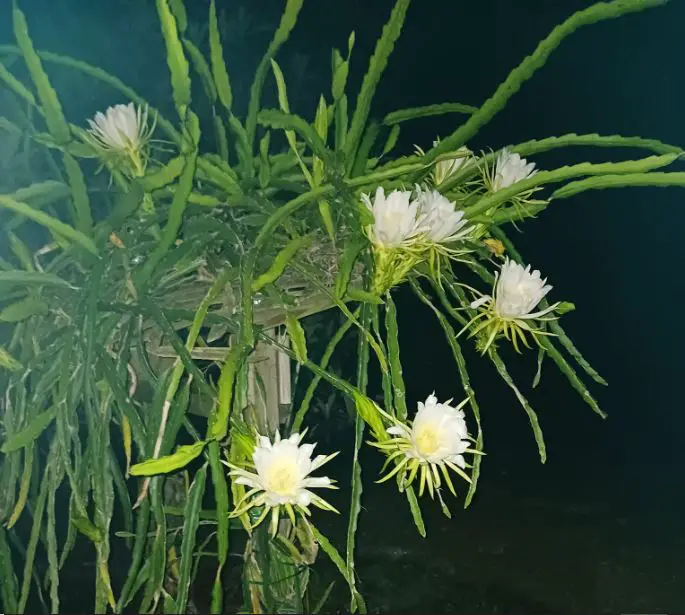
The dragon fruit cactus (Selenicereus undatus) also known as white-fleshed pitahaya is a hanging cactus that can grow up to 20 feet long. Its segmented stems can also produce aerial roots that help the cactus climb on surfaces or trellises.
White-fleshed pitahay produces edible fruits and the plant can also be cultivated for ornamental purposes. Growing and caring for dragon fruit plants is relatively easy. It needs full sun and well-draining soil. Watering should be regular but not too much to cause root rot.
Peanut cactus
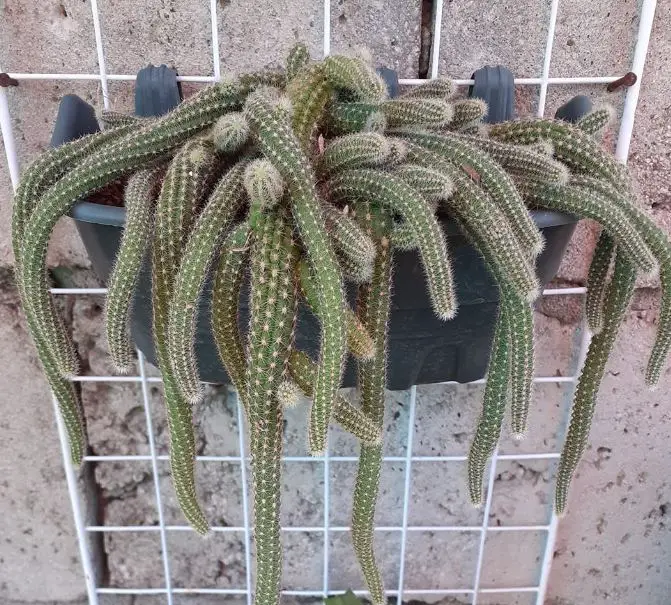
The peanut cactus (Echinopsis chamaecereus) is a small trailing cactus named for its finger-like stems that resembles a cluster of peanuts. The peanut cactus is a popular houseplant that blooms profusely in the spring and summer with attractive wide orange flowers.
These cacti grow best in full sun and well-draining soil. They should be watered regularly, but the soil should be allowed to dry out completely between the waterings. Peanut cacti are not frost-tolerant, so they should be brought indoors during the winter.
Tips for growing cacti in hanging baskets
Growing cacti in baskets is not so different from normal potting. What is important is to understand the needs of your cascading cactus. Here are a few tips to follow:
- Use cactus or succulent potting mix. Cacti are prone to root rot so it’s essential to use a potting mix that drains well.
- Choose a spacious basket. Most trailing cactus branch profusely at the base of the stems so use a pot that is spacious but not oversize.
- Water regularly but allow the soil to dry out completely. Cacti don’t like sitting in soggy soil, so water only when the soil is completely dry to avoid the problem of root rot.
- Fertilize during the growing season. Apply a well-balanced fertilizer once per month during spring and summer.
- Place the hanging basket in a sunny spot. Make sure your plant is receiving at least 6 hours of sunlight per day. However, some epiphytic cacti prefer bright indirect sunlight.
- Protect your cactus from frost. There are only a few cold hardy cacti, the majority of cactus plants can be damaged by frost. The best way to protect them is to bring the basket indoors during a cold winter.
- Inspect your cactus regularly for pests and diseases. Cacti can be susceptible to Insect pests such as mealybugs, scale, and aphids. Inspect and treat for pests as needed.
Final Thought
There are just a few cacti that can be grown in hanging baskets. The most popular ones include the rattail cactus, monkey’s tail cactus, fishbone cactus, dragon fruit cactus, and peanut cactus. Their ascending stems make them perfect for hanging planters.
Like other cacti, trailing cactuses need good care to thrive. Grow them in well-draining soil and hang the basket in a sunny spot. To prevent the problem of root rot, water your cactus only when the soil is completely dry. Further, inspect the plant regularly for pests and treat as needed.
My name is Diane M Lewik, and I am the founder of this website. I am a degree holder in plant biology from the University of California – Berkeley. Over the years, I have cultivated a vast collection of succulents and I have learned a great deal about how to grow and care for these unique plants. Feel free to ask any questions in the comment section below.
